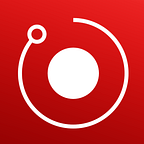RNDR: New changes to the token structure of the RNDR Network
We are making technical changes to accommodate new possibilities for the network
Dear RNDR Token Community,
As we get closer to Phase I and the launch of the RNDR network, we wanted to make public some changes that we have been planning for the RNDR Network.
Here is what we intend to do:
We elect to change the token supply from the current 2.147bn (2³¹) model to 536m (2²⁹) and change the relative token allocations to be:
○ 55% for Sale
○ 35% in the RNDR Reserve (“RR”, formerly known as the RUDF)
○ 10% for the team + advisors
This is why we will do this:
- Better supply and demand calculations and equilibrium
The RNDR team has done calculations on supply and demand of GPUs in the RNDR network, and arrived to the conclusion that a ~4x reduction in the token supply for these early phases would make much more sense given the scale of the platform over the short/medium-term.
We based the token reduction solely on technical capabilities of the RNDR network to make network participation more functional given a smaller token supply.
2. Improved function of the new token
The reduction in tokens will allow full expansion on the concept of ordinality with the RNDR token, which is crucial for the initial success of the platform. Ordinality provides a means of prioritizing jobs based on various factors, and is intended to relate directly to how many RNDR tokens a GPU rig is allowed to process. Because ordinality is based on the total number of tokens, rather than just the number held by users, the reduction in the number of tokens should enhance the effectiveness of this feature.
3. Reduced risk for network participants
Having 65% of the RNDR tokens held in the RR could eventually lead to an oversupply of tokens if too many are released onto the network. Having a larger portion of tokens held by users should reduce the risk of inadvertently over-shooting demand.
This is how we plan to do this:
We will create, audit, and release a proxy smart contract, which will involve a voluntary process where current RNDR token holders will have the ability to send their current tokens with the 2³¹ denominator supply through the smart contract in order to get the new RNDR tokens with the 2²⁹ denominator.
The number of tokens that you currently have will stay the same, and only the total tokens in the ecosystem will be changed by a factor of four. For example, if you have 1000 RNDR tokens now, you will have 1000 RNDR tokens after this smart contract process.
In order to change your old RNDR into new RNDR tokens, you will have to send a transaction on the Ethereum blockchain via smart contract that will be on both the old RNDR token contract-chain and the new RNDR token contract-chain. By linking the new transaction via transfer to the wallet and reconciling it with the old transaction and your Genesis Token Sale Phase, ordinality can be allocated to the new wallet and tracked from the beginning.
We will have a detailed step-by-step guide on what to do, as well as our full support system on a dedicated RocketChat channel to assist with any questions about the token process.
As always, please feel free to come to us with any questions or comments on RocketChat or Twitter — we are glad to help!
RNDR On,
-The RNDR Team
Join us in the Rendering Revolution
Stay in touch with us and learn more about Render Token:
On our community chat!
By following us on Twitter!
By subscribing to our subreddit!
By joining our Telegram!
